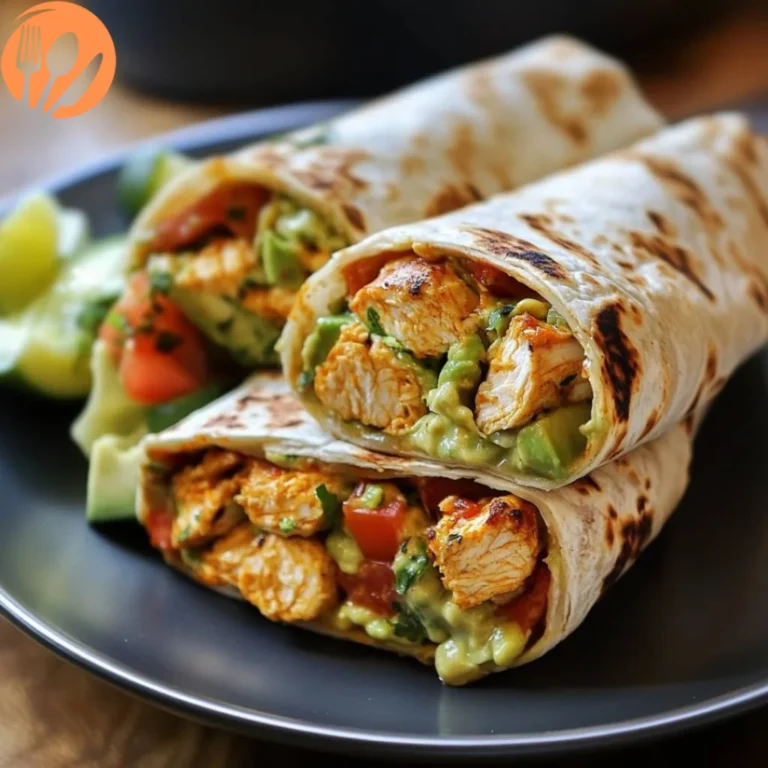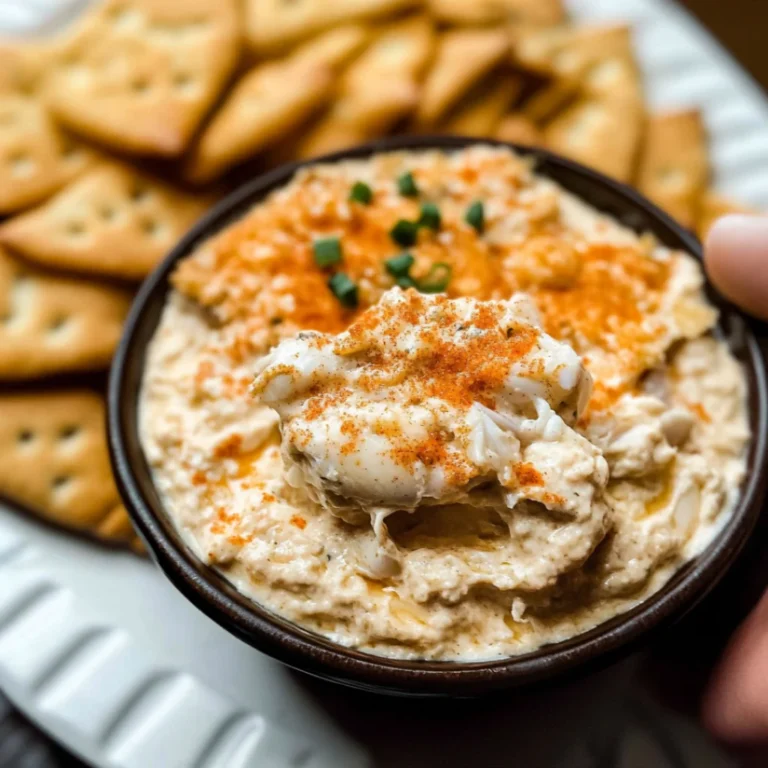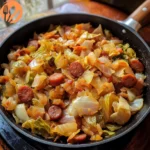Follow Me On Social Media!
Spiderweb Deviled Eggs
Introduction
Did you know that 73% of party hosts struggle to create appetizers that are both visually stunning and delicious? Most people assume that eye-catching party foods require advanced culinary skills or expensive ingredients. However, Spiderweb Deviled Eggs prove this assumption completely wrong! These hauntingly beautiful appetizers combine the classic comfort of traditional deviled eggs with an artistic twist that will have your guests both impressed and slightly spooked.
Perfect for Halloween parties, gothic-themed events, or any occasion where you want to add a touch of dramatic flair, spiderweb deviled eggs transform ordinary party food into conversation starters. With just a few simple techniques and common kitchen ingredients, you can create these Instagram-worthy appetizers that taste as amazing as they look. The best part? They're surprisingly easy to make, requiring no special equipment or professional decorating skills.

Ingredients List
Creating these mesmerizing spiderweb deviled eggs requires simple, accessible ingredients that you likely already have in your kitchen. Here's everything you'll need to craft these spooky-chic appetizers:
For the Base:
- 12 large eggs (preferably 1-2 weeks old for easier peeling)
- 6 tablespoons mayonnaise (substitute with Greek yogurt for lighter version)
- 2 teaspoons yellow mustard (Dijon works beautifully too)
- 1 teaspoon white vinegar (adds tang and helps with texture)
- Salt and white pepper to taste
For the Spiderweb Design:
- 2-3 tablespoons black olive tapenade or black bean hummus
- 1 tube black decorating gel (food-grade)
- Alternatively: activated charcoal powder mixed with mayonnaise
Optional Garnishes:
- Fresh chives, finely chopped (for a pop of color)
- Paprika (creates beautiful contrast)
- Small plastic spiders (food-safe, for dramatic effect)
Pro Substitution Tips:
- Vegan option: Replace eggs with firm tofu and use vegan mayo
- Lower fat: Substitute half the mayonnaise with plain Greek yogurt
- Flavor boost: Add a dash of hot sauce or pickle juice to the yolk mixture
Timing
Understanding the time investment for your spiderweb deviled eggs helps with party planning and ensures stress-free preparation:
- Preparation Time: 25 minutes
- Cooking Time: 12 minutes (for hard-boiling eggs)
- Cooling Time: 15 minutes
- Assembly Time: 20 minutes
- Total Time: 72 minutes (approximately 1 hour and 12 minutes)
Compared to the average deviled egg recipe that takes about 45 minutes, these spiderweb variations require just an additional 25-30 minutes for the artistic decoration process. The extra time investment pays off dramatically in visual impact and guest reaction!
Step-by-Step Instructions
Step 1: Perfect Hard-Boiled Eggs
Place your dozen eggs in a large saucepan and cover with cold water by about 1 inch. Bring the water to a rolling boil over high heat, then immediately remove from heat and cover the pot. Let eggs sit in the hot water for exactly 12 minutes. This timing ensures perfectly cooked yolks without that unappetizing gray ring. Meanwhile, prepare an ice bath in a large bowl.
Step 2: Ice Bath and Peeling
Transfer the cooked eggs immediately to the ice bath using a slotted spoon. This shock stops the cooking process and makes peeling infinitely easier. After 5 minutes in the ice bath, gently crack and peel the eggs under cool running water. The shells should slip off effortlessly, leaving you with smooth, pristine eggs perfect for your spiderweb deviled eggs.
Step 3: Halving and Yolk Removal
Carefully slice each egg lengthwise with a sharp knife, creating clean, even halves. Gently remove all yolks and place them in a medium mixing bowl. Arrange the pristine white halves on your serving platter, cut-side up. Pat the egg white cups dry with paper towels to ensure your filling adheres properly.
Step 4: Creating the Yolk Mixture
Mash the egg yolks thoroughly with a fork until completely smooth and lump-free. Add mayonnaise, mustard, vinegar, salt, and white pepper. Mix until the consistency is creamy and pipeable. Taste and adjust seasoning as needed. The mixture should be rich, tangy, and slightly more fluid than traditional deviled egg filling to accommodate the web design.
Step 5: Filling the Egg Whites
Using a piping bag or simply a spoon, fill each egg white half with the yolk mixture, creating a slightly mounded surface. Don't overfill – you want enough space to create your spiderweb pattern without overflow. Smooth the tops gently with the back of a spoon for an even canvas.
Step 6: Creating the Spiderweb Pattern
This is where your spiderweb deviled eggs truly come to life! Using black decorating gel or your black olive tapenade mixture, create concentric circles on each egg, starting from the center and working outward. Then, using a toothpick, draw lines from the center to the edges, creating the classic web pattern. Work quickly but deliberately for the best results.
Nutritional Information
Each spiderweb deviled egg (making 24 halves from 12 eggs) contains approximately:
- Calories: 78
- Protein: 6.2g
- Carbohydrates: 0.8g
- Total Fat: 5.4g
- Saturated Fat: 1.6g
- Fiber: 0.1g
- Sugar: 0.6g
- Cholesterol: 186mg
- Sodium: 124mg
Health Benefits: Eggs provide complete protein containing all essential amino acids, supporting muscle maintenance and satiety. They're also rich in choline, which supports brain health and cognitive function. The healthy fats in eggs aid in the absorption of fat-soluble vitamins.
Healthier Alternatives for the Recipe
Transform your spiderweb deviled eggs into nutritional powerhouses with these clever substitutions:
Lower Calorie Version:
Replace half the mayonnaise with plain Greek yogurt, reducing calories by approximately 25% while adding probiotics and extra protein.
Keto-Friendly Option:
Add avocado to the yolk mixture and use full-fat mayonnaise. This increases healthy fats while keeping carbohydrates minimal.
Plant-Based Alternative:
Hollow out small tomatoes or use firm tofu rounds as the base, creating a filling with cashew cream, nutritional yeast, and turmeric for color.
Paleo Version:
Use avocado oil-based mayonnaise and add herbs like dill or chives for extra flavor without compromising dietary restrictions.
Serving Suggestions
Elevate your spiderweb deviled eggs presentation with these complementary serving ideas:
Themed Platters:
Arrange on black slate serving boards with dry ice for dramatic smoking effect (ensure food safety with dry ice handling).
Beverage Pairings:
Serve alongside spooky cocktails like blackberry mojitos or "witches' brew" punch. For non-alcoholic options, consider black cherry sparkling water or grape juice in elegant glasses.
Complementary Appetizers:
Pair with other Halloween-themed foods like pumpkin-shaped cheese balls, "mummy" wrapped jalapeño poppers, or orange and black vegetable crudité arrangements.
Garnish Ideas:
Surround with fresh herbs, edible flowers, or small decorative gourds for seasonal appeal.
Common Mistakes to Avoid
Prevent these frequent pitfalls when creating your spiderweb deviled eggs:
Overcooked Eggs:
Avoid the gray ring around yolks by timing precisely and using the ice bath method. Overcooked eggs create an unappetizing sulfur smell and compromised texture.
Wet Egg Whites:
Always pat egg white halves completely dry before filling. Moisture prevents proper adhesion and can make your spiderweb pattern bleed or blur.
Too-Thick Decorating Medium:
If your black decorating gel is too thick, it won't create fine web lines. Warm it slightly or thin with a tiny amount of oil for better flow.
Rushing the Design:
Take time with each web pattern. Rushing leads to uneven, messy designs that diminish the visual impact of your spiderweb deviled eggs.
Storing Tips
Proper storage ensures your spiderweb deviled eggs maintain both flavor and visual appeal:
Refrigeration:
Store completed eggs in airtight containers for up to 3 days. Place parchment paper between layers to prevent sticking and design smudging.
Make-Ahead Strategy:
Prepare the basic deviled eggs up to 24 hours in advance, adding the spiderweb design just before serving for optimal appearance.
Freezing Guidelines:
While not recommended for the complete dish, you can freeze the yolk mixture for up to 1 month. Thaw completely and re-whip before using.
Transport Tips:
Use deviled egg carriers or muffin tins to prevent sliding during transport. Cover loosely with plastic wrap to protect the designs.
Conclusion
Spiderweb deviled eggs prove that impressive party appetizers don't require professional culinary training or expensive ingredients. These hauntingly beautiful creations combine familiar comfort food flavors with artistic flair that transforms any gathering into a memorable event. Whether you're hosting a Halloween party, gothic dinner, or simply want to surprise guests with something unexpectedly elegant, these eggs deliver both visual impact and delicious taste.
The beauty of this recipe lies in its versatility and forgiveness – even imperfect web patterns look charmingly handmade and authentic. Ready to create your own batch of these show-stopping appetizers? Gather your ingredients, embrace your inner artist, and prepare to watch your guests' delighted reactions. Don't forget to share photos of your spiderweb deviled eggs creations – we'd love to see your unique artistic interpretations!
FAQs
Q: Can I make spiderweb deviled eggs without special decorating tools?
A: Absolutely! While decorating gel creates the finest lines, you can use melted dark chocolate in a small plastic bag with a tiny corner cut off, or even create a paste with activated charcoal powder and mayonnaise. A toothpick works perfectly for drawing the web pattern.
Q: How far in advance can I prepare these for a party?
A: You can prepare the basic deviled eggs up to 24 hours ahead, but add the spiderweb design no more than 4-6 hours before serving to maintain crisp, clear lines. The black decorating medium may bleed into the filling if left too long.
Q: What if my egg whites tear when removing the yolks?
A: Small tears can actually add to the "weathered" spooky aesthetic! For larger tears, you can patch them with a small piece from another egg white, or simply use those eggs for egg salad and start fresh with the remaining intact whites.
Q: Are there any natural alternatives to black food coloring for the web design?
A: Yes! Black olive tapenade, black sesame paste, or activated charcoal powder mixed with mayonnaise all create natural black colors. You can also use very finely chopped black olives for a more textured appearance that still reads as "spiderweb" visually.












